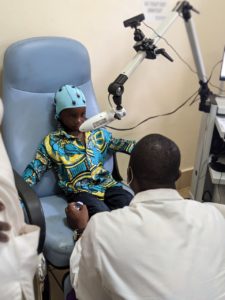Epilepsy and Neurology
Epilepsy is a neurological disorder that affects millions of people worldwide
Prevalence
In sub-Saharan Africa, epilepsy is a major public health problem, 2-3 times more than in other continents: 20 years ago there were an estimated 10 million people affected by the condition, in the last 20 years population in sub-Saharan Africa doubled hence people living with epilepsy are more than 20 millions. Several factors contribute to the high prevalence of epilepsy in sub-Saharan Africa, including a higher incidence of risk factors such as brain infections (HIV, malaria, neurocysticercosis and others), traumatic brain injury, and perinatal brain injury, malnutrition, limited access to healthcare etc.
Access to care
There are significant challenge in managing and treating epilepsy in this region. One of the major challenges is the lack of access to healthcare and medication. More than 75% people with epilepsy in sub-Saharan Africa do not have access to the medications they need to manage their condition.
➡️ DREAM offers free access to all
Education of health care workers
There is only one neurologist every 2 millions inhabitants; combined with the doctors’ shortage explains why epilepsy is very often managed by non physician clinicians whose education on the disease is insufficient. This is expected to last for many decades making long term education plans for non physicians clinicians a priority in the fight against epilepsy in sub-Saharan Africa.
➡️ DREAM provides continuous education to health care personnel provided by specialists
Antiepileptic drugs
The availability of affordable and accessible anti-epileptic drugs is essential to the management of epilepsy but they are not readily available nor affordable in sub-Saharan Africa. The medications may be of poor quality or counterfeit leading to treatment failure, medication side effects, and development of drug-resistant epilepsy.
➡️ DREAM grants both proper drug provision to prevent stock interruption and quality of drugs
Stigma
Another challenge is the stigma associated with epilepsy.The disease may be seen as caused by evil spirits, curses, or witchcraft, and as a result, people with epilepsy may be ostracized and isolated with reduced opportunities for education and employment, and poor mental health outcomes including risk of suicide.
➡️ In addition to helthcare services, DREAM offers attention and protection to patients with epilepsy along with education of patients and their families, and awareness campaigns
Telemedicine
Telemedicine can be used to improve healthcare services where specialist care is not available. Specialists can provide advices to local clinicians in diagnosis, treatment and follow up of people with epilepsy.
➡️ DREAM offers a free telemedicine service including teleneurology also sending EEG recordings from local centres to specialists in Europe
Unifying HIV and epilepsy management
HIV is a risk factor for many non communicable diseases including epilepsy and other neurological disorders. UN-WHO indicated to unify management of HIV and non communicable diseases at HIV centres to improve lives’ of millions HIV+ people in sub-Saharan Africa.
➡️ Since almost 10 years DREAM unifies management of HIV and non communicable diseases also including epilepsy in the last few years
In summary
Epilepsy is a highly prevalent chronic condition in sub-Saharan Africa with a huge treatment gap.
DREAM follows the WHO Intersectoral Global Action Plan (IGAP) on epilepsy by strengthening healthcare system based on:
- improving access to care;
- long lasting education programs to health care workers;
- awareness campaigns to fight stigma;
- telemedicine;
- advocacy and lobbying with local governments;
- involvements of western countries public and private institutions.




